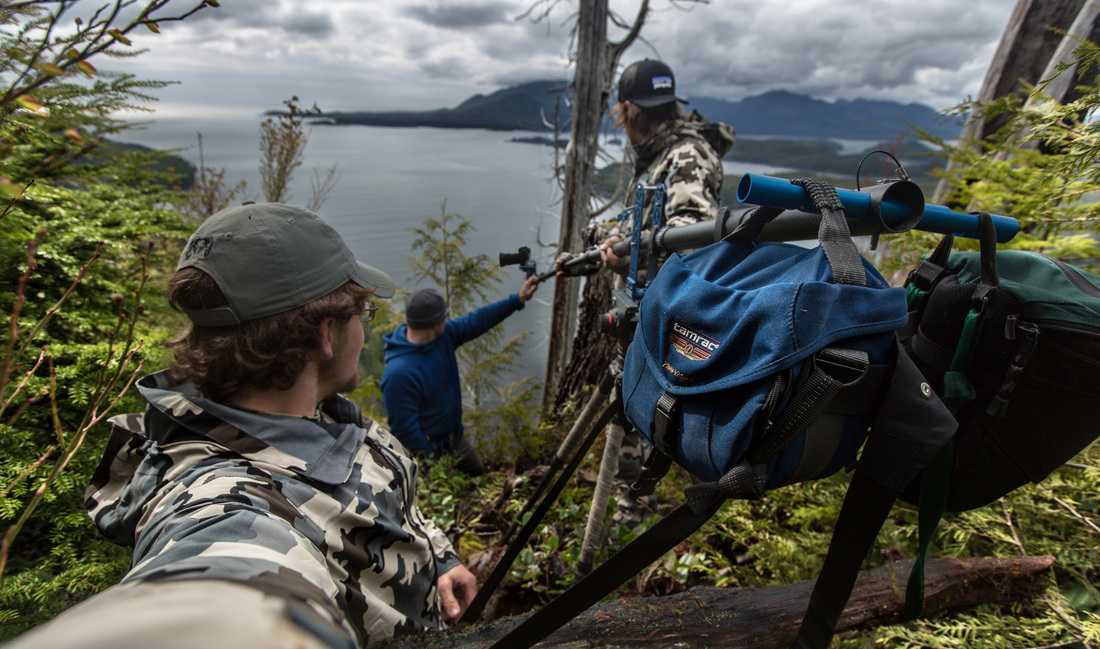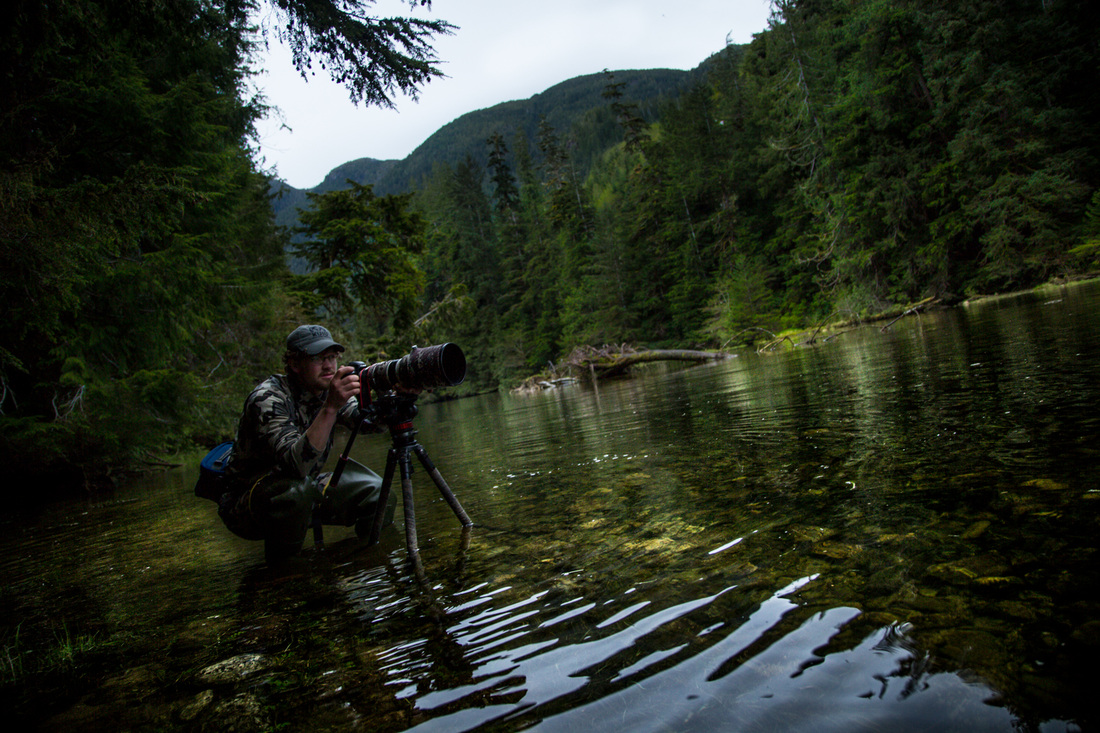Over the past few years the bar has been reset in the hunting film industry. The days of incessant “kill porn” and repetitive, shamelessly unimaginative content are giving way to the works of a number of innovative companies truly pushing the limits of production quality and content creativity in their hunting and adventure films. Donnie Vincent and the team at Sicmanta, Kyle Nickolite (Producer/Director/Editor) and William Altman (Director of Photography) are one of these leading production teams emphasizing a return to the core of what true hunting is all about: a love of adventure and the stories that accompany a hunt and a deep connection with the places and animals we love to pursue. For us here at The JOMH they were naturally one of the first “trailblazers” we wanted to interview. We’ve been unbelievably impressed by their films but after our interview we were even more impressed by the amount of work that brings their amazing films to life. We hope you enjoy!
First and foremost, where does the name “Sicmanta” come from?
It comes from my brain. I was trying to come up with a word that would act as a representation of our production company, something that would be unique, cool, and stand out . I borrowed the word ‘manta’ from the manta ray and added ‘sic’ from the mid 19th century dialect variant of the word “seek” … put the two together and voila … we had a cool sounding word to call our production company.
Donnie is best known as the face of the film series but there’s obviously an insane amount of work involved in pulling off projects of this caliber. Give us a bit of background on the company and the rest of the Sicmanta team.
I’m not a hardcore hunter. I definitely enjoy it, but I wouldn’t classify myself as such and I never had a plan to be involved in the hunting industry. When it comes down to it I’m a video editor by trade who loves the entire process of creating stories that are told through moving pictures. I went to college in a small town in South Dakota and worked many jobs (from a butcher shop, to a chef in a restaurant), but my favorite was editing a local hunting/fishing show because it allowed me to edit videos and helped pay the bills at the same time. I met the right people along the way who eventually introduced me to a project that would feature the adventures of Donnie Vincent. It was during one of the productions for this film series that a larger plan was developed. We were sitting on a hillside in the Patagonia region of Argentina, filming an archery red stag hunt when we decided that what we were currently working on just was not what we truly wanted to be spending our time on. So we discussed things, presented the idea to William and started Sicmanta not long after.
The theme of adventure is clearly emphasized in the teaser but let’s get a little deeper on the inspiration behind your films. In the River’s Divide at one point Donnie says “there’s always a story” behind a hunt, can we assume it’s this essence that you’re trying to capture?
That is a perfect assumption, our films really follow two elements on a parallel path, and both the story and the celebration of where we are become the ingredients of our work. Showing the audience the simplest of details brings them right along with us, and the story always presents itself. You can’t visit such places and be around the people involved for even a single day without having a story to tell. It might not end up a grand novel but trust me you’ll have a story. There is never a script and we never have to add drama, these are elements that keep the work real and keep us on our toes.
Given the growing popularity and emphasis on extreme mountain hunts these days, you guys chose a whitetail hunt in North Dakota as your film premiere. Tell us why you chose this over a mountain hunt?
Once you see The River’s Divide you’ll know exactly why we chose this as our premiere film for the adventure series. It’s a great representation of hunting as a whole and why people choose to hunt. Not only that, it has everything you want in a story. Tension, drama, ups & downs, a true test of man vs nature and more importantly himself.
Without giving away too much, what can you tell us about the other species and locations you filmed for the series? The teaser trailer has some epic footage in it!
Absolutely, it’s not as though we’re giving anything away per say, our stories are very unscripted, always unknown. We almost always experience fantastic events whether they are simple or big in nature that affect the outcome of both the hunt and film.
Our current film, “Terra Nova- Three days on the island” is a hunt for woodland caribou in Newfoundland. Some of the other locations that we have filmed in the last few years include Alaska, the Northwest Territories and British Columbia along with a few other locations here in the lower 48. Donnie is very drawn to the arctic regions and the animals that live there which is great for filming because the country is so beautiful and so dangerous to film in, we never know what we’re in for! Glad you liked the teaser; it’s incredible to put all of the blood, sweat and tears into a few short minutes.
Any wilderness hunt guided or not, is a serious undertaking as far as logistics and gear are concerned but you guys must have to take this to a whole new level. Give us an overview of just how complicated it is to film at this level in the wild. Do Donnie and the film crew have this down to a “minimalist” science?
Every trip is different but none of them are logistically easy in regards to camera equipment and the gear we choose. We live by the motto “if you have two you have one, if you have one you have none”. When preparing for an expedition having two of everything is a must. We’ve broken camera bodies, USB cables, batteries, memory cards, you name it … and without a spare, the entire trip could be seriously jeopardized. The footage is priceless. So having all the necessary means to protect that footage and to be sure you can move it and store it in a safe place is an absolute must.
We can never bring enough battery power. Our trips average anywhere from 10-20 days. This means we are taking solar equipment to charge our batteries as well as a laptop with external hard drives to manage the footage. At the end of each day we carefully copy the files from our cards to two hard drives. Normally we leave the data on the cards as well and only delete from there once the cards are full. Dumping footage and keeping everything perfectly organized is a job in itself. Like I said, the footage is priceless – so we make sure to have the best drives and the best cards we can possibly get and we keep them stored in specially designed protective cases, in multiple locations.
The production team heading out on the trip usually consists of three of us. The overall amount of equipment we take is limited to what the team is willing to carry and sometimes that means leaving things at home. The weight of the equipment before the trip is one thing, but carry that same amount of weight for 30 miles in one day and it feels completely different (Fun fact: William Altman and Donnie hiked just over 30 miles in one day in TOK, Alaska on a Dall sheep hunt). If it’s going to slow us down or possibly hinder us from being successful it often gets left behind. The trick is finding the right balance between what we want, what we need, and what we can physically handle bringing. Camera equipment is constantly changing and improving, so our kits are evolving as well. It’s a lot of trial and error when it comes to filming wildlife. There’s been plenty of times where we’ve missed shots or made mistakes, but we learn from them and make improvements for the next time.
Other than the unpredictability of the animals, what is the biggest challenge when it comes to filming projects like these?
Staying focused on capturing the story is one of the biggest challenges. Sometimes it’s extremely tough to separate the living story from the captured story when you have to live and be a part of the story at the same time. It may seem possible but you can’t just run around with cameras and film everything, there’s not enough time in the day and there’s too much riding on the outcome to leave it up to pure chance. We know details of the trips, so preproduction is a must, and potential storylines have to be created prior to leaving for a trip. There has to be production goals set and plans put in place that are ready to be changed at a moments notice and with those unknown variables it’s tough to stay focused on the bigger picture and even tougher when you yourself are involved with a lot more than just the production aspect of the trip. This is even more true when things aren’t going well … it can be a lot to take on at times but you just have to make the best of every situation.
With such a small crew you have to do everything that your subjects are doing… from setting up camps, to battling the elements, to managing gear, etc. But you can’t forget to live through the lens. Everything else has to become secondary in importance, and that’s where it can get very challenging. Every detail matters. When it rains, we capture the rain and how our subjects are affected by that weather change in the documented “storyline”. The documented story, or how the audience eventually sees it play out, is a polished representation of the living story, the two are not the same, but in order to be successful they need to be as close to the same as possible, and feel like they are. The screen will always tell, the only thing that matters is the end product and it’s your job to make sure you’ve painted a true and entertaining picture for the audience. If you can somehow capture the mood, convey that mood through the moving pictures, put them there in that moment and make the viewers feel something… you’ve succeeded. The stories are everywhere, and they can be as simple or as complex as needed. But what it boils down to, is it’s just a matter of seeing past everything else, rising above the here and now, in order for you to put yourself in the best position possible to capture a glimpse at the bigger picture. Find that bigger picture and live there. It’s very challenging, but extremely rewarding when it all comes together!
From the Editors:
Sicmanta’s award-winning “The River’s Divide” is without question one of, if not the best, hunting films we have ever had the pleasure of watching. In our opinion, it belongs in every hunter’s library. To purchase the DVD or view the incredible trailers for their upcoming films we encourage you to visit their website https://donnievincent.com/the-rivers-divide/.






